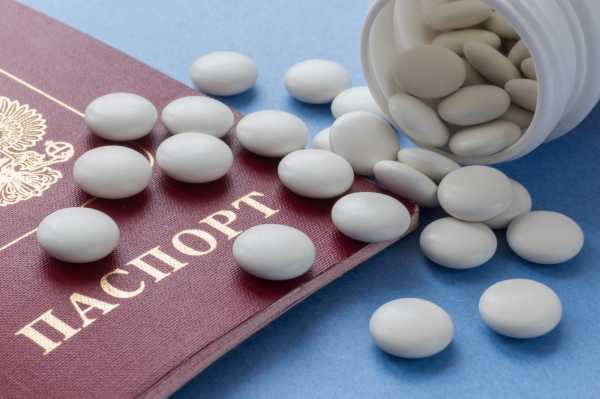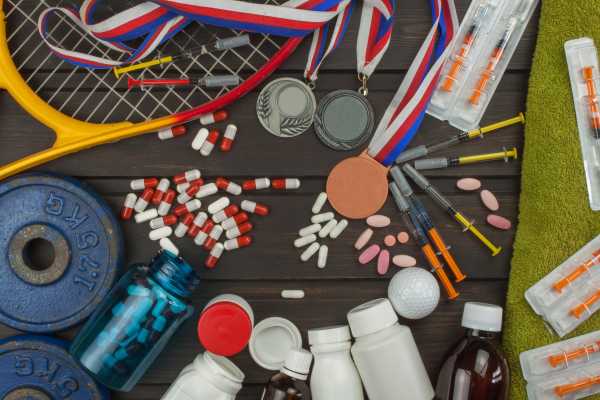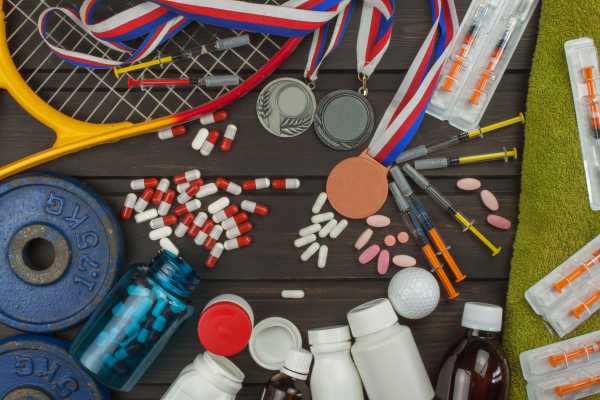
The 2018 Winter Olympics in Pyeongchang, South Korea, have come to a close, and only four athletes were busted for doping.
Yay?
It’s certainly an improvement over the 2014 Winter Olympics in Sochi, where Russia ran a massive, state-sanctioned doping program for its athletes, got caught, and was stripped of 13 of the 33 medals it won.
Yet the four athletes who were caught this year are a reminder that the pressure to cheat is still there. And it’s growing more intense as technology advances and the stakes get higher in international competitions. “Doping appears remarkably widespread among elite athletes, and remains largely unchecked despite current biological testing,” the authors of a 2017 World Anti-Doping Agency (WADA) study write.
Anti-doping officials like Olivier Rabin, however, are convinced they can win. Rabin has led the science division at WADA since 2002, and believes better testing in the future will be able to all but eliminate doping. Even with the rise of new technologies like brain stimulation, doping tactics like microdosing, and nefarious government conspiracies, tools like biological passports could make illegal performance enhancers a non-factor in future competitions.
A lightly edited version of our conversation follows.
Umair Irfan
Sorry about earlier. Looks like the line was garbled and then disconnected.
Olivier Rabin
Hopefully we are not being recorded by the Russians.
Umair Irfan
So do you actually think we can end doping?
Olivier Rabin
Well, if my answer to your question was no, I wouldn’t be at WADA. I’m one of the people who believes that yes, we can probably come to that point.
There will always be new substances coming, but if we can be proactive enough to receive all the information from the pharmaceutical and biotech industries for new drugs with doping potential … if we can access very rapidly all the illegal drugs that are released around the world almost every week, that’s just a matter of resources.
It’s not that we do not know what to do; it’s that we need to do it at a sufficiently large scale.
If you look at the Pyeongchang Olympic Games, the leading nation in medals was Norway, and Norway has a very good anti-doping agency there and they test their athletes a lot. So it shows that you can compete and you can win with good anti-doping programs in your country.
So I think there’s a lot of challenges to come, but yes, … I really believe that we can come to a point when the impact of doping in sport would be absolutely negligible.
Umair Irfan
It’s interesting you bring up Norway because there were some questions about Norwegian athletes misusing the therapeutic use exemption for asthma drugs, which can also serve as performance enhancers. Their Olympic team went to Pyeongchang with 6,000 doses of asthma medicine. That seems fishy.
Olivier Rabin
Asthma is fairly prevalent in some sports and in some countries. And when we talk about the athletic population, people who compete in the cold and dry air environment are more susceptible to developing bronchoconstriction related to physical activity.
Asthma is not unusual, let’s put it this way. We have developed our own research on asthma and drugs to treat asthma, and we have no indication today that when taken at a therapeutic dose by inhalation, those drugs can provide any performance-enhancing effect to the athletes.
We have been involved in a few cases where we thought the medication was not properly used. And if needed, that can lead to sanction of the athletes wherever they are in the world, Norway or elsewhere.
Umair Irfan
Do we know how prevalent doping is in general? I’ve seen different estimates, including an anonymous WADA survey that found that anywhere between 43 percent and 70 percent of athletes were using banned substances in various international competitions.
Olivier Rabin
It’s a very good question. First of all, when I say “prevalence,” it should probably be “prevalences” because we’ve got indication that prevalence of doping varies according to the sport and according to the country.
You’ve got sports with potentially fairly high doping [cycling, weightlifting], a few percent, and different sports in the same country with an extremely low prevalence of doping [archery, table tennis]. In that situation, it’s not related to the country, it’s related to the discipline.
And then you’ve got countries, Russia being one of them, where manipulation can be high and the prevalence of doping is probably high. A publication by the [International Association of Athletics Federations, the governing body for track and field] back in 2011 found that the prevalence of blood doping track and field varies a lot from country to country. Probably from discipline to discipline as well.
There is no one simple answer to this, and this is why at WADA we’re working now with a group of experts to develop tools that could be put in the hands of anti-doping organizations to better assess the prevalence of doping in their country or their sport.



Umair Irfan
As more new drugs are developed and more substances are added to the banned list — there are more than 300 now — it seems like doping screens are getting harder.
Is the goal to screen for everything, or are you being more strategic about how you test?
Olivier Rabin
You are right. It’s always a challenge when you’ve got hundreds and hundreds of substances to analyze and the sensitivities of the methods you apply. Of course, we have to develop strategies, and those strategies are guided by our colleagues in other departments. Let’s take an example, EPO abuse could be potentially more prevalent or more of a benefit for the athletes [in cycling and track and field]. Then in those sports we need to have a higher rate, a higher percentage of samples tested for EPO.
Of course in some other sports where EPO use is less of an issue — let’s think about chess, let’s think about curling for example — you may want to reduce percentage of samples analyzed for EPO. You do some EPO analysis but you do not do that as frequently as for other endurance sports.
Umair Irfan
How do you deal with institutionalized cheating, like what we saw with the Russian government manipulating test results at the laboratory?
Olivier Rabin
First of all, as you may be following the Russian dossier from the beginning, you may have seen that one of the first concrete actions taken by WADA was to suspend the lab and then to revoke it and then to request that the lab director at the time was basically laid off.
That’s the authority we have over the anti-doping labs. It was a lesson learned by everybody that, of course, a lab that is part of the anti-doping system can with different strategies fool the system. Even as we started to have suspicions, we needed to go from suspicions to proof, proof that we could use before a court, which we’ve done of course now.
In 2012, we did two things that I believe are very important: We received the authority to investigate under the new version of the WADA anti-doping code. A case like the one we’re referring to required investigation power that we now have.
The second element that now is in place is what we call the international standard for compliance. In the past, WADA had no authority when a country, or a sport, or other bodies such as a government or an international organization were not compliant with the anti-doping rules as established under the world anti-doping code. This has changed now. We have an international standard in place that allows us to investigate, but also a sanctioning mechanism for countries that are not compliant.
I really believe that we can come to a point when the impact of doping in sport would be absolutely negligible.
Umair Irfan
It seems athletes are looking increasingly toward forms of mental performance enhancement or drugs that act on the central nervous system. Clearly, drugs like amphetamines are banned, but it seems there is a gray area with drugs like caffeine and some new twists with tactics like transcranial direct current stimulation. How does WADA handle these kinds of drugs or strategies?
Olivier Rabin
So there are still new stimulants that we add to the list. They are by definition are prohibited, but when we see new legal ones coming, we identify them and we make their detection a variable to screen at the anti-doping labs.
Now if you talk about transcranial stimulation, this is something our group of experts looked into and they are not convinced at this point that there are some measurable enhancements of performance with this approach. We follow the literature very well, and if you look at transcranial stimulation, some studies are very controversial and there is still a need for this methodology to demonstrate that it is effective.
Some people believe it is, some other people are very doubtful. It’s also being applied also in a medical environment and we followed some of these studies being conducted for clinical applications of transcranial stimulation. And again, the results are not that clear.
So before we jump the gun and say this is absolutely prohibited, we need to have some level of scientific and medical evidence to say so. The code imposes on us that a banned method has the potential to be performance enhancing, is a risk for the health of the athletes, and potentially violates the spirit of sport. For now, transcranial stimulation doesn’t fulfill these criteria.
Caffeine has been the subject of a lot of debate with our list expert group. The fact that caffeine is widely available shows it cannot be considered as a risk for health, even sometimes you’ve got studies showing quite the opposite. So far WADA decided not to include caffeine on the list of prohibited substances and methods.
Umair Irfan
I’ve been really interested in the use of the athlete biological passport as a tool to detect cheating in sports like cycling and track and field by monitoring the values of individual biomarkers over time that could signal foul play. It seems that it’s shifting the burden of proof from the anti-doping authorities to find cheating to the athletes who have to now prove they are clean.
Can you tell me about the logic behind this approach?
Olivier Rabin
Having been intimately involved with the passport at the very beginning back in 2002-2003, I think that there are two major things you have to keep in mind. The first one is that you are not using a reference population or reference range population to establish a value.
Now, with the passport, we have changed from a reference range population to your own values. So that cuts down on a lot of human population variability.
The second element coming into play is we take the values over time and we use what we call the adaptive model. It allows us to predict what your next value should be if you do not manipulate your biology, or if you take doping substances.
We usually need to have two or three values to establish a good baseline for the different variables, the different biomarkers. And some of the athletes are tested tens of times every year.
When all these elements are developed and well-integrated, some of us do believe that it will be very, very complicated for athletes to dope, or if they do, they will do it at such a low scale that the impact on their performance is probably going to be negligible.
Umair Irfan
Have you started to see the effects of a biological passport? And could an athlete game the passport? Can athletes microdose with a performance enhancer over time so their baseline is elevated?
Olivier Rabin
Today the athlete biological passport, and in particular the hematological module, has led to a huge difference in terms of impact on the blood variables. There has been some very good data collected by some federations showing the normalization of the blood variables of the athlete population compared to normal values in given populations.
With a normalization of blood values over time, we showed that the athletes are less likely to manipulate.
Let’s think about EPO microdosing. It’s something we integrated into the development of the hematological module of the ABP right at the beginning. Some of the studies we have conducted have been done with microdosing factored in.
Now we are not naïve to the point where we believe that we have eradicated blood doping. We are constantly refining the passport and the biomarkers and the variables we include in the passport to make sure this is a very strong tool that will last for years.
Sourse: vox.com






